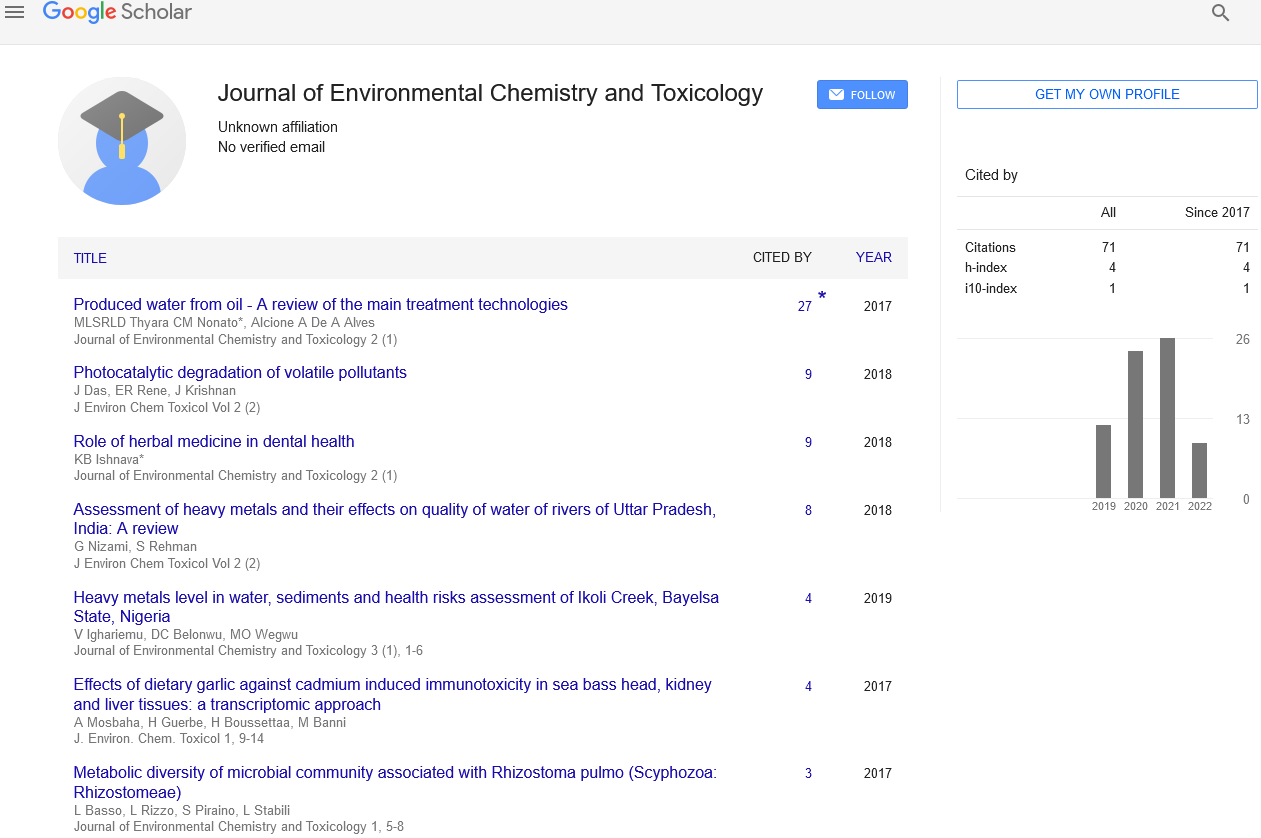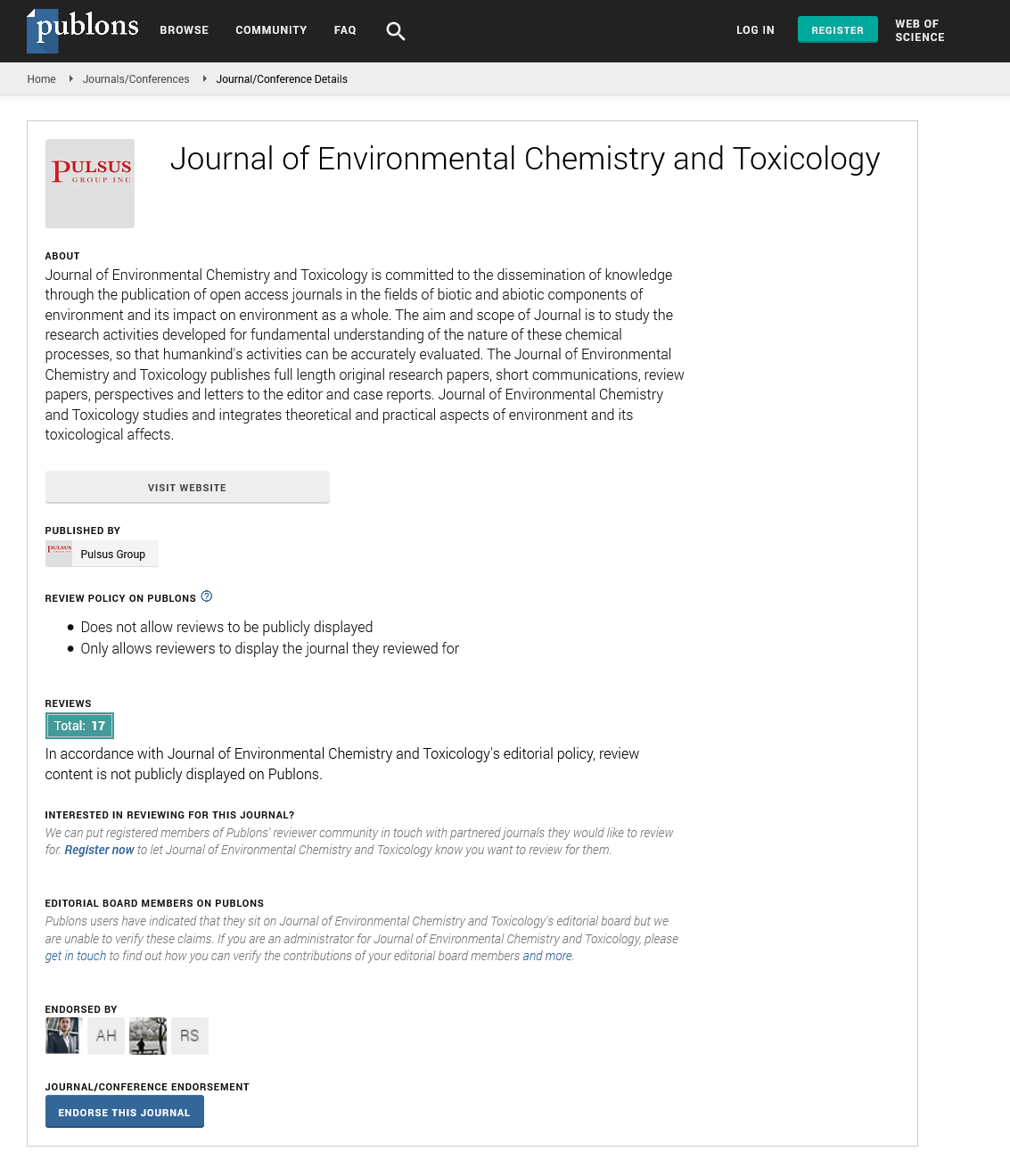Potential Toxic Metals in Dumpsite
Received: 14-Jul-2021 Accepted Date: Jul 23, 2021; Published: 28-Jul-2021
Citation: Devi Prasad M. Potential Toxic Metals in Dumpsite. J Environ Chem Toxicol 2021;5(4):1-1
This open-access article is distributed under the terms of the Creative Commons Attribution Non-Commercial License (CC BY-NC) (http://creativecommons.org/licenses/by-nc/4.0/), which permits reuse, distribution and reproduction of the article, provided that the original work is properly cited and the reuse is restricted to noncommercial purposes. For commercial reuse, contact reprints@pulsus.com
Editorial
Solid wastes are generated by industries and the volume is increasing along with increasing urbanisation and population. Their disposal has become a global environmental problem. Batteries, geothermal activities, mining, coal combustion, paint and paper industries are among few sources of such toxic solid wastes. Major sources of heavy metal contaminations in China, Malaysia and other countries including Nigeria have been identified to fall into these categories of manufacturing industries.
Soil flushing, soil washing, and stabilization are some of the traditional remediation processes used to remove heavy metals from polluted areas. These techniques have some drawbacks, such as sluggish metal precipitation and high energy and reagent costs. The inadequacies of traditional remediation approaches have required the adoption of a more cost-efficient and effective solution with fewer of these draw backs. The use of fungi in bioremediation has been shown to be cost-effective and environmentally favourable in the removal of hazardous metals from contaminated soil.
Heavy metals are efficiently removed by mushrooms, macrofungi, by aggregating them in the fruiting body, which comprises of a cap with sporophore, strip, and mycelium. In this regard, mushrooms have been discovered to be useful in the cleaning of dirty environments. Edible mushrooms are high in antioxidants and vitamins, making them a good source of nutrition. As a result, despite its excellent medical capabilities, using edible mushrooms to detoxify a dirty environment is not practical. Non-edible mushrooms, such as Ganoderma lucidum, can provide a promising method for heavy metal uptake and accumulation as an alternative to heavy metal adsorbents. Heavy metal tolerance is known to be great in G. lucidium. Functional groups such as amide, ether, oxalic acid, and thiol have been found in G. lucidum and have been linked to heavy metal biosorption. As a result, G. lucidum could be a useful adsorbent for removing heavy metals from soil contaminated by a stack of battery slag. The pyrometallurgical process step in which spent batteries are submitted for the recovery of metallic lead generates a large volume of slag as a by-product. The chemical composition of slag varies greatly, depending mostly on the efficiency of the pyrometallurgical process used. Slag makes up roughly 20–25% of the whole furnace-feeding load, which is made up of a byproduct called slag.
The chemical composition of slag varies greatly, depending mostly on the efficiency of the pyrometallurgical process used. Metallic lead, sulphuric acid, iron scraping, coke, and sodium carbonate make up roughly 20–25 percent of the entire furnace-feeding load in the slag. By storing slag in an open container, soluble components could be lost and the slag could become stable. For the slag to be environmentally friendly, it should be aged for at least six months before being discarded in landfills. Slag, on the other hand, can turn into hazardous wastes that are poisonous, corrosive, and whose acid components could leach into the environment if not properly handled. The Environmental Protection Agency of the United States has created a toxicity characteristic leaching procedure, which is a regulated method for determining if a waste has a toxicity characteristic and is harmful. The TCLP method was created to determine if a waste is susceptible to control under the Resource Conservative and Regulatory Act of 1980, subpart C. The TCLP was created to replicate landfill leaching in the worst-case scenario. Several tales abound of environmental hazards caused by battery slag dumped in an Ibadan dumpsite by the battery business.






